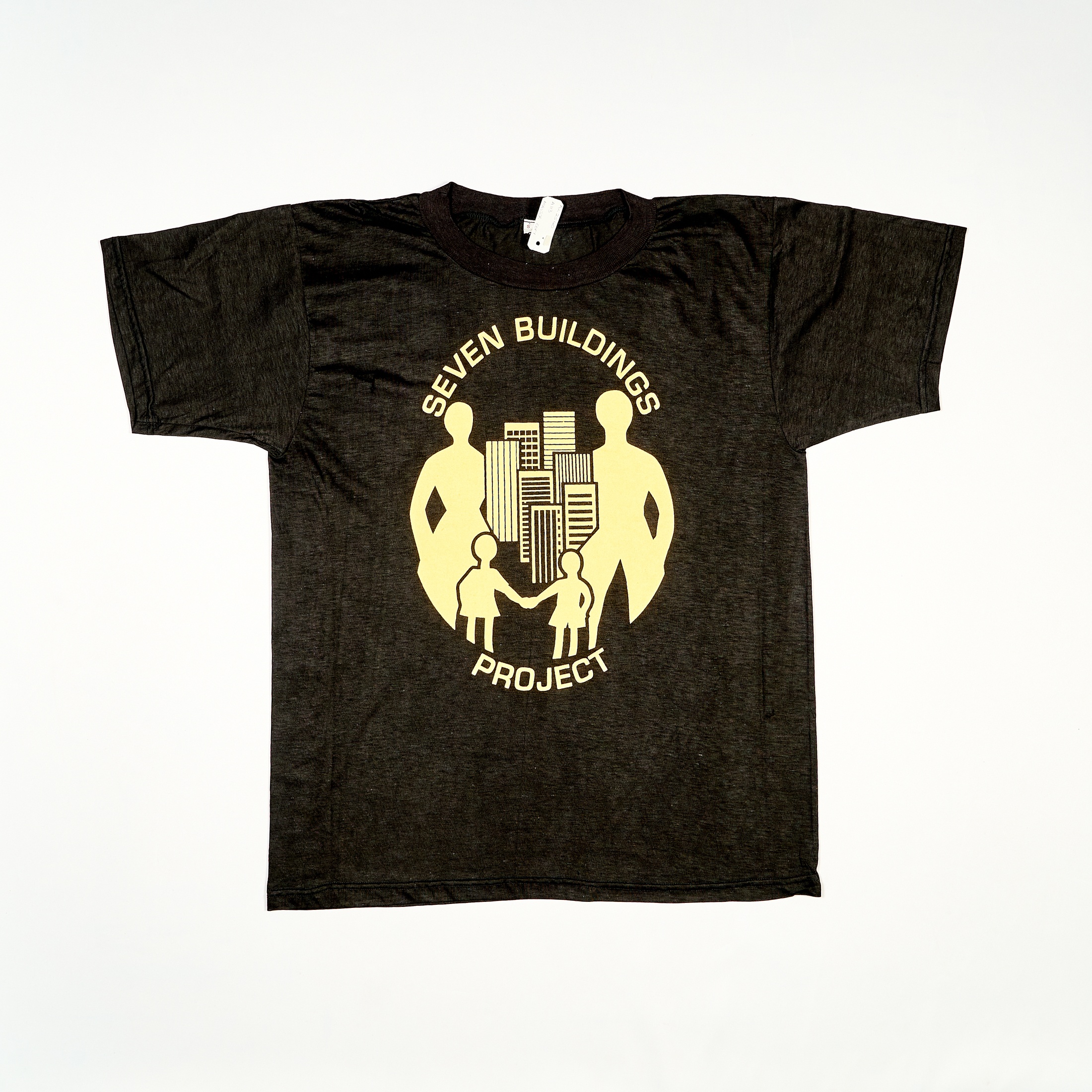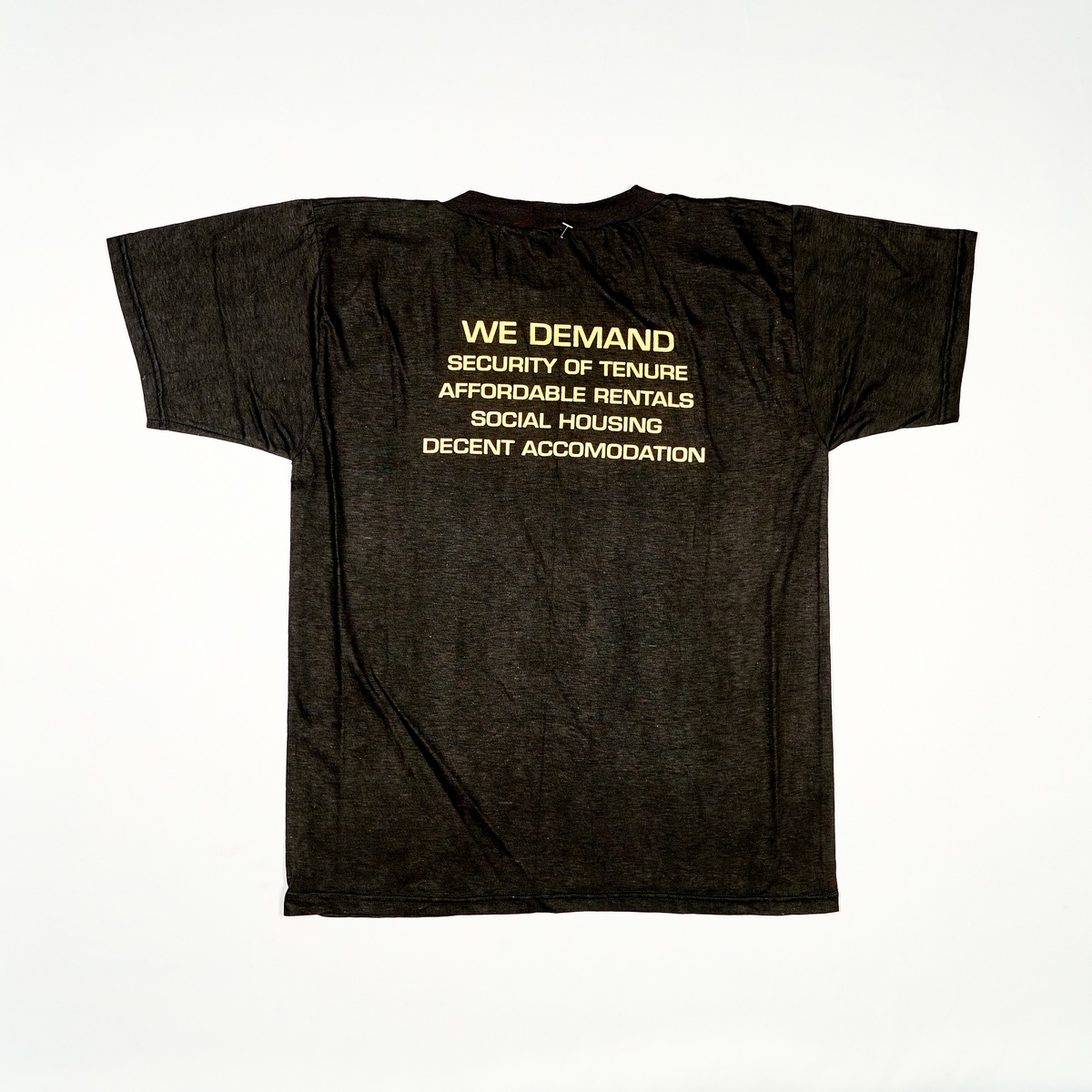
Digital record
SEVEN BUILDINGS PROJECT (front)
WE DEMAND SECURITY OF TENURE AFFORDABLE RENTALS SOCIAL HOUSING DECENT ACCOMMODATION (back)
With the breakdown of the Group Areas Act in the late 1980s, the racial demographics of areas like Hillbrow and Joubert Park underwent a radical transformation. Fearful of the 'swart gevaar', banks redlined the area and greedy companies operating under sectional title took over the buildings, forcing tenants to pay exorbitant rentals and encouraging ideal conditions for the creation of an urban slum. Buildings were overcrowded, maintenance broke down and crime flourished, while the city council sat back and watched Hillbrow become an open wound in a blighted urban landscape.
A rent boycott was organised by the tenants of seven buildings. Even after the tenants had resumed paying rent, they did not have leases and were therefore illegally occupying the buildings. Because they had housing, they were not considered poor enough for a housing subsidy. Yet they were not rich enough for bank loans.
In 1995, a transfer of ownership was given to a company called the Seven Buildings Project (SBP), a scheme which entitled tenants to a R5 million subsidy through the National Housing Forum. Although the tenants were not owners in the conventional sense — they continued to pay rent — as sectional title shareholders their interests were to be represented by a company director from each of the seven buildings.
There was hope that this housing scheme would act as a model for progressive housing policies throughout urban areas in South Africa. However, by 2000, there were accounts of disrepair and poor maintenance caused by the corruption of the SBP management.
